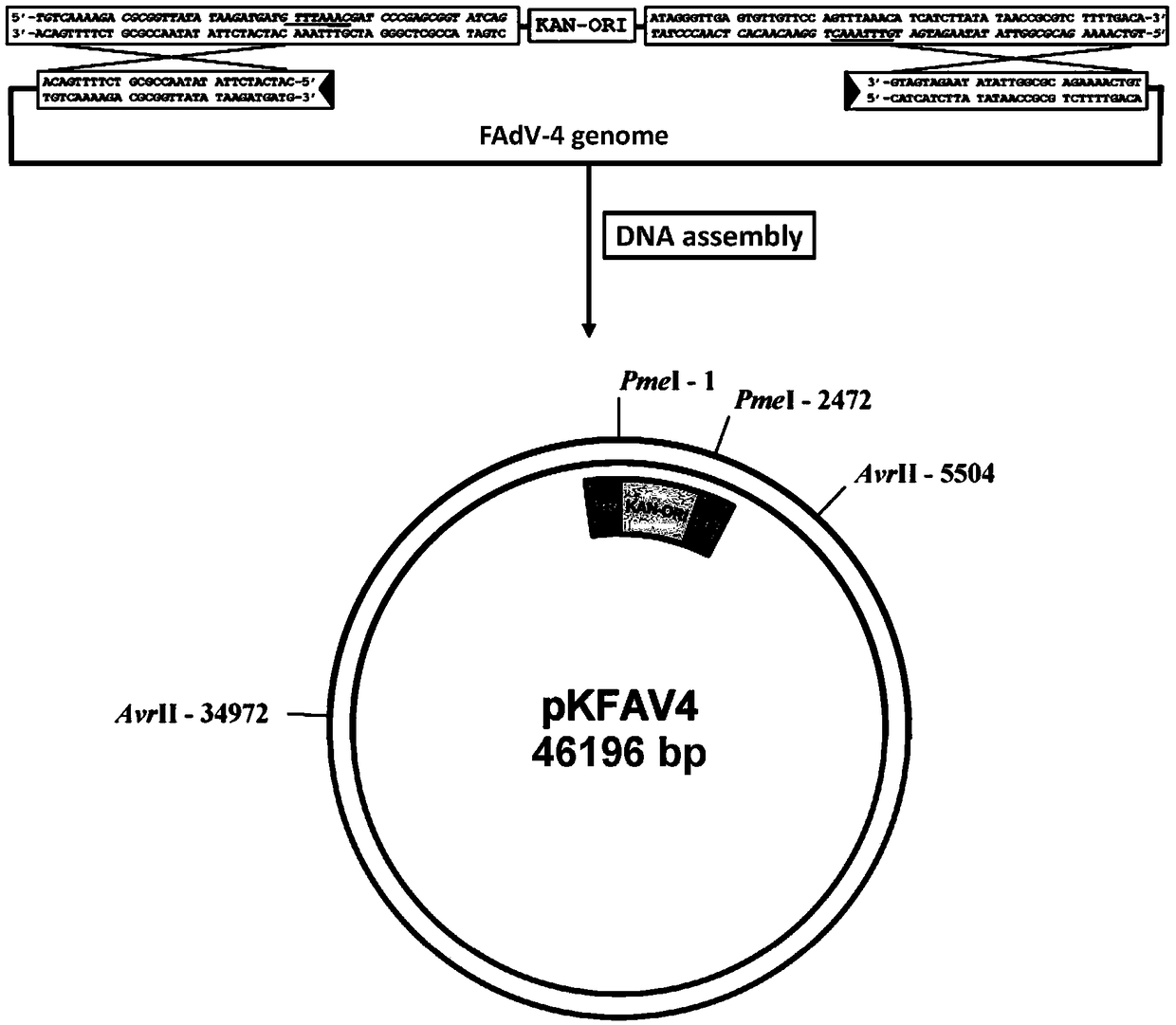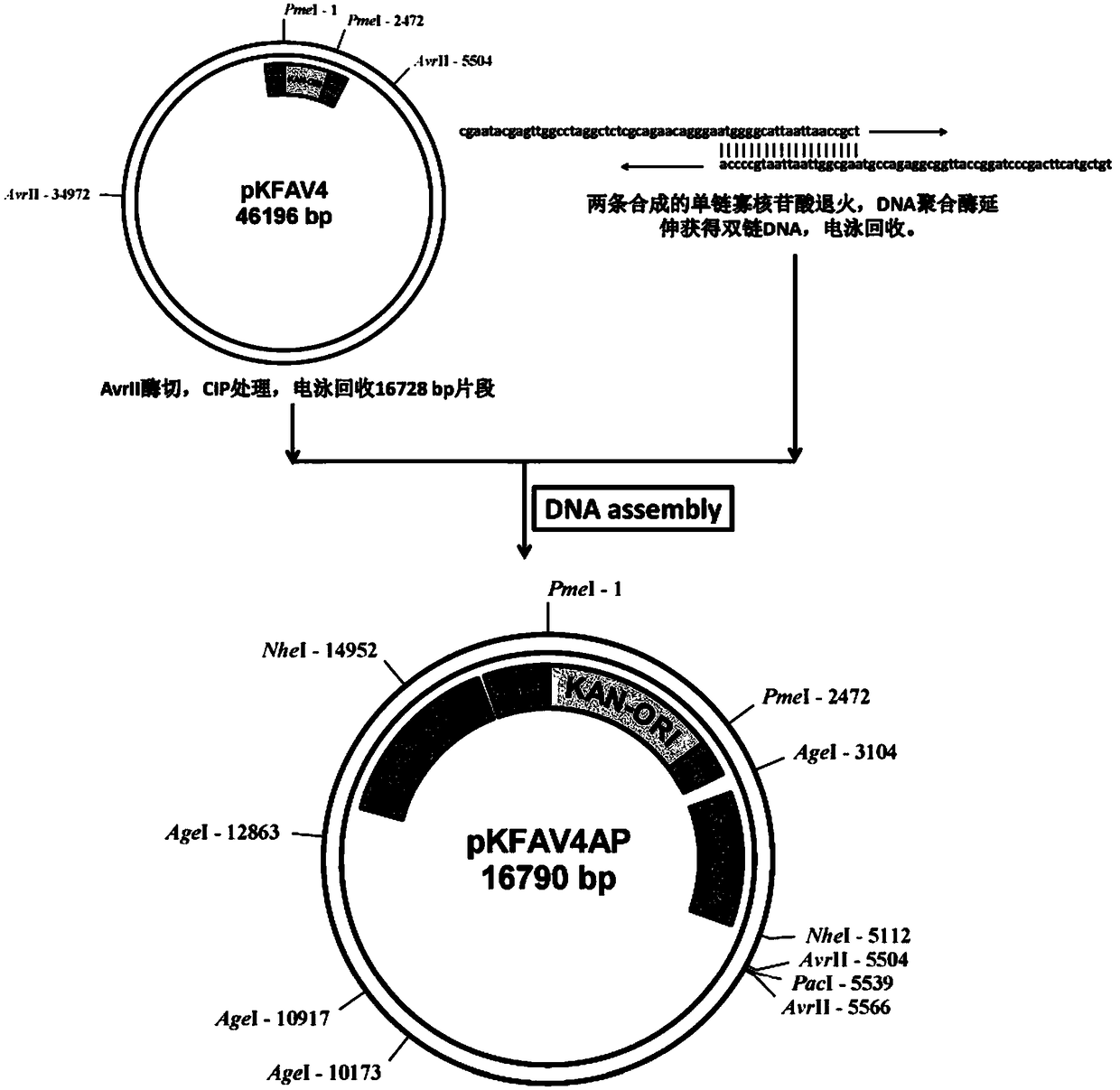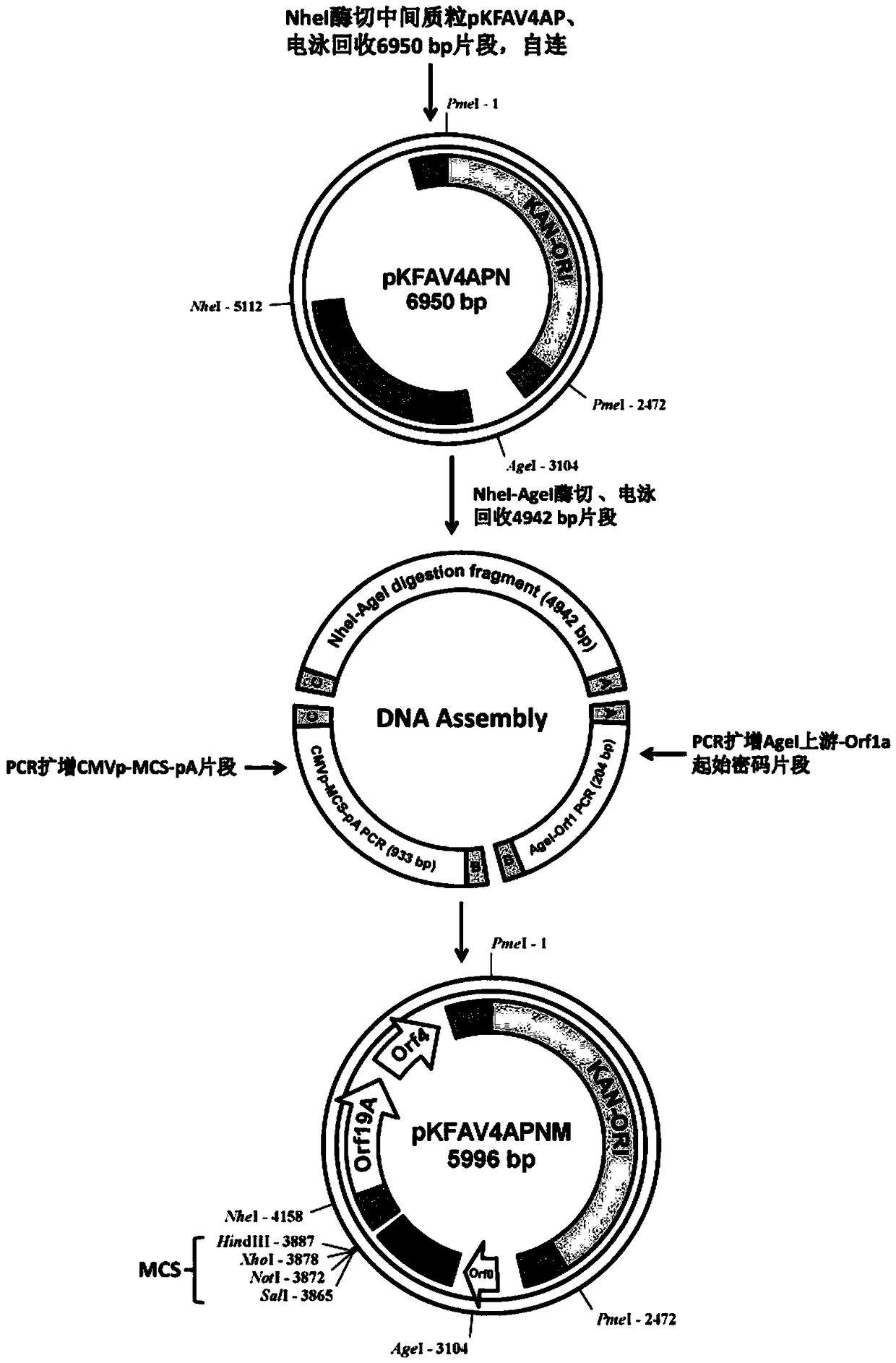Fowl adenovirus 4 (FAdV-4) vector system and applications thereof
A technology of poultry adenovirus and vector system, applied in the field of recombinant poultry adenovirus FAdV-4 vector system, can solve the problem of viral genome instability and other issues
- Summary
- Abstract
- Description
- Claims
- Application Information
AI Technical Summary
Problems solved by technology
Method used
Image
Examples
Embodiment 1
[0050] Embodiment 1, FAdV-4 genome is cloned to plasmid
[0051] The schematic diagram of the construction of the backbone plasmid pKFAV4 is shown in figure 1 . Wild-type FAdV-4 was isolated from a broiler chicken farm in Shandong Province, and it can be passaged and amplified in LMH chicken liver cancer cells. Under standard polymerase chain reaction (PCR) conditions, using the pShuttle-CMV plasmid (stratagene company) as a template, 1707KFAdV-F: tgtcaaaaga cgcggttata taagatgat g tttaaac gat cccgagcggt atcag (the underline indicates the PmeI restriction site), 1708KFAdV-R: tgtcaaaagacgcggttata taagatgat gtttaaac tgg aacaacactc aaccctat (the underline indicates the PmeI restriction site) (BGI Synthesis) was used as a primer to amplify the 2537bp fragment KAN-ORI (SEQ ID NO: 1). The 30 bp at both ends of the fragment is identical to the ITR sequence of the FAdV-4 genome. The KAN-ORI fragment recovered by electrophoresis was mixed with wild-type FAdV-4 genomic DNA, and t...
Embodiment 2
[0053] Embodiment 2, construction of intermediate plasmid pKFAV4AP
[0054] The pKFAV4 plasmid is relatively large, and it is difficult to directly modify the genome on the left side of the plasmid. Therefore, a small plasmid is gradually isolated from the pKFAV4 plasmid for exogenous gene replacement.
[0055] figure 2 A schematic diagram of the construction of the intermediate plasmid pKFAV4AP is shown. First digest the pKFAV4 plasmid with AvrII, treat with calf alkaline phosphatase (CIP) to remove 5’p, prevent the fragments from self-ligating, and recover the 16728bp fragment by electrophoresis; then design 2 primers, 1707Avr-PacF: cgaatacgag ttgg cctag ctctcgcaga acagggaatg gggca ttaat taa ccgct (the underline indicates AvrII and PacI restriction sites), 1707Avr-PacR tgtcgtactt cagc cctag ccattggcggagaccgtaag cgg ttaatta a tgcccca (the underline indicates AvrII and PacI restriction sites) self-annealed, and DNA polymerase extended to obtain a 96bp DNA fragment (...
Embodiment 3
[0056] Embodiment 3, construction of shuttle plasmid pKFAV4APNM
[0057] image 3 A schematic diagram of the construction of the shuttle plasmid pKFAV4APNM is shown. The molecular weight of the intermediate plasmid pKFAV4AP is still relatively large, and it is difficult to be directly used for the insertion of the target gene. Therefore, a smaller plasmid was isolated from pKFAV4AP, and Orf1-Orf2 was replaced with human cytomegalovirus promoter-multiple cloning site-SV40polyA plus tail signal to obtain the shuttle plasmid pKFAV4APNM. The specific construction process is as follows: First, the intermediate plasmid pKFAV4AP was digested with NheI, the 6950bp fragment was recovered by electrophoresis, and the pKFAV4APN plasmid was obtained after self-ligation. The pKFAV4APN plasmid was then digested with NheI / AgeI, and a 4942bp fragment was recovered by electrophoresis; the pKFAV4APN plasmid was used as a template and 1707KFAV4AgeIF attcctccac tgctttgaac cca1707KFAV4AgeIR cccgt...
PUM
 Login to View More
Login to View More Abstract
Description
Claims
Application Information
 Login to View More
Login to View More - R&D
- Intellectual Property
- Life Sciences
- Materials
- Tech Scout
- Unparalleled Data Quality
- Higher Quality Content
- 60% Fewer Hallucinations
Browse by: Latest US Patents, China's latest patents, Technical Efficacy Thesaurus, Application Domain, Technology Topic, Popular Technical Reports.
© 2025 PatSnap. All rights reserved.Legal|Privacy policy|Modern Slavery Act Transparency Statement|Sitemap|About US| Contact US: help@patsnap.com



